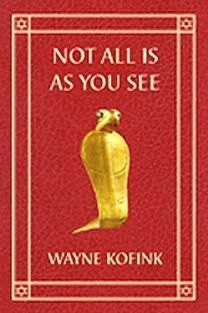ADVENT MAN: JOHN THE BAPTIST
John the Baptist has long been one of the figures associated with Advent since he was the one who pointed the way to Christ. This coming Sunday, the Third Sunday in Advent the story pf John baptizing in the Jordan will be read from Luke. While the same account appears in Mark and Matthew, it has a different context in Luke, for this Gospel tells us John’s background–how the angel Gabriel told Zechariah and his wife Elizabeth that they would have a son. No sooner is that story finished than another one begins. Once again Gabriel delivers the news of a coming birth, but this time the news comes to Mary the betrothed wife of Joseph. The child is Jesus. At the end of the story we learn that Elizabeth and Mary are relatives, so John and Jesus are also relatives.
The revelation changes the context for the Baptism of Jesus by John. As relatives John and Jesus must have known each other. And there’s the frustration of the Gospel account. We know absolutely nothing about the relationship between John and Jesus. Some scholars have wondered if Jesus were a disciple of John’s at some point since at least one of Jesus’ disciples, Andrew, had also been John’s disciple. That’s all speculation.
Human imagination being what it is, people have filled in the blanks in the relationship between Jesus and John with their own ideas. One of my favorite flights of fancy is Sir John Everett Millais’s painting “Christ in the House of His Parents (1850). Millais was one the nineteenth century English painters of the Pre-Raphaelite Brotherhood–a group that rebelled against academic painting of their day. Modern artists often regard the Pre-Raphaelites as terribly quaint and old-fashioned, but they regarded themselves as the cutting edge of art. Here’s the famous painting.
A young Jesus stands at the center about to kiss his mother. Reaching out to him is Joseph and behind him Ann, the mother of Mary. A closer look reveals there is a puncture wound in Jesus’ hand. Some of the blood has fallen on his foot. Immediately, we see the symbolism of the crucifixion.
To the right is another child–John.
We recognize him because of the animal skin he’s wearing. He’s also carrying a basin of water, a symbol of baptism. Did John ever visit at Joseph’s carpenter shop? Who knows.
We do know something about Millais’s painting: it was vilified by the critics. They hated the realistic portrayal of something religious. Perhaps the most severe criticism came from none other than Charles Dickens:
You behold the interior of a carpenter’s shop. In the foreground of that carpenter’s shop is a hideous, wry-necked, blubbering, red-headed boy, in a bed-gown, who appears to have received a poke in the hand, from the stick of another boy with whom he has been playing in an adjacent gutter, and to be holding it up for the contemplation of a kneeling woman, so horrible in her ugliness, that (supposing it were possible for any human creature to exist for a moment with that dislocated throat) she would stand out from the rest of the company as a Monster, in the vilest cabaret in France, or the lowest ginshop in England. Two almost naked carpenters, master and journeyman, worthy companions of this agreeable female, are working at their trade; a boy, with some small flavor of humanity in him, is entering with a vessel of water; and nobody is paying any attention to a snuffy old woman who seems to have mistaken that shop for the tobacconist’s next door, and to be hopelessly waiting at the counter to be served with half an ounce of her favourite mixture. Wherever it is possible to express ugliness of feature, limb, or attitude, you have it expressed. Such men as the carpenters might be undressed in any hospital where dirty drunkards, in a high state of varicose veins, are received. Their very toes have walked out of Saint Giles’s.It strikes me odd that a man who could write with such gritty realism should be appalled by the realism of a painting. It might be comprehensible if Dickens had been a very traditional-minded Christian who took offense at portraying Jesus in such humble mein, but he wasn’t an orthodox Christian. To be sure he had respect for Jesus. Remember that wonderful scene in A Christmas Carol when Bob Cratchit and Tiny Tim return from church on Christmas Day?
"Old Lamps for New Ones." Household Words 12 (15 Jun. 1850)
"And how did little Tim behave?'' asked Mrs Cratchit, when she had rallied Bob on his credulity and Bob had hugged his daughter to his heart's content.Yet the description of the Angel’s message to the shepherds in Dickens’s Life of Our Lord very much shows his Unitarian leanings.
"As good as gold,'' said Bob, "and better. Somehow he gets thoughtful, sitting by himself so much, and thinks the strangest things you ever heard. He told me, coming home, that he hoped the people saw him in the church, because he was a cripple, and it might be pleasant to them to remember upon Christmas Day, who made lame beggars walk, and blind men see.''
There is a child born to-day in the city of Bethlehem near here, who will grow up to be so good that God will love him as his own son; and he will teach men to love one another, and not to quarrel and hurt one another; and his name will be Jesus Christ; and people will put that name in their prayers, because they will know God loves it, and will know that they should love it too.Long, long ago after watching a movie version of A Christmas Carol, I realized how it skirted the essence of Christmas. To be sure there were themes of good-will, kindness, generosity and other commendable qualities. And Scrooge does put in an appearance at church on Christmas Day, but we are left to wonder what it is they are celebrating.
It is much like that favorite Christmas carol, “It came upon a Midnight Clear.” You sing through the whole song with almost no hint that it has something to do with the birth of Christ. The closest it gets is the first stanza, third line: “Peace on the earth, good will to men, From heaven’s all-gracious king.” Any surprise that the author Edward H. Sears was also a Unitarian, an American contemporary of Dickens?
Well, I started off on John the Baptist, and I’ll end there with the wonderful Advent hymn by Charles Coffin, Jordanis oras praevia translated “On Jordan’s Bank”
1. On Jordan's bank the Baptist's cry
Announces that the Lord is nigh;
Come, then, and hearken, for he brings
Glad tidings from the King of kings.
2. Then cleansed by every Christian breast
And furnished for so great a Guest.
Yea, let us each our hearts prepare
For Christ to come and enter there.
3. For Thou art our Salvation, Lord,
Our Refuge, and our great Reward.
Without Thy grace our souls must fade
And wither like a flower decayed.
4. Lay on the sick Thy healing hand
And make the fallen strong to stand;
Show us the glory of Thy face
Till beauty springs in every place.
5. All praise, eternal Son, to Thee
Who advent sets Thy people free,
Whom, with the Father, we adore
And Holy Ghost forevermore.
May the One who is to come bless you on your journey and greet you on your arrival.
Wayne
12379
Labels: Advent, Dickens, John the Baptist, Millais






